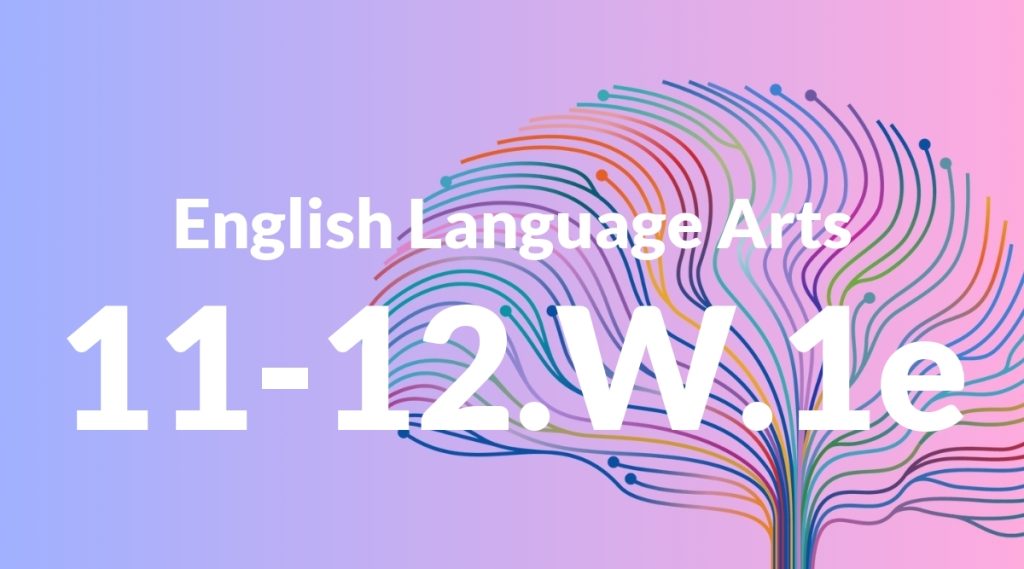Standard: 11-12.W.1e – Provide a concluding statement or section that follows from and supports the argument presented.
Grade level: Grade 11-12
Subject: English Language Arts
Domain: Writing
Teacher Overview
This standard focuses on the importance of providing a strong concluding statement or section in writing. It emphasizes the need for conclusions that not only summarize the argument but also reinforce its significance and leave a lasting impression on the reader. Mastery of this skill is crucial for students as it enhances their ability to communicate effectively and persuasively. Students should understand how to construct a logical argument and be familiar with the basic components of an essay, including the introduction, body paragraphs, and conclusion.
After mastering this standard, students will be able to create more nuanced and sophisticated arguments. They will enhance their skills in critical thinking and synthesis, applying these abilities in various writing contexts, such as advanced academic writing and professional communication.
Common Misconception 1
A common misconception is that a conclusion is merely a summary of the main points. This is incorrect because a strong conclusion should not only summarize but also provide insight into the implications of the argument and leave the reader with a final thought or call to action.
Intervention 1
To address this misconception, provide students with examples of effective conclusions that go beyond summary. Engage students in activities where they analyze and critique various conclusions, focusing on how they reinforce the argument and provide closure.
Common Misconception 2
Another misconception is that a conclusion is unnecessary if the argument is strong. This is incorrect because a conclusion is essential to reinforce the argument and provide closure. Without it, the reader may be left with unanswered questions or an incomplete understanding.
Intervention 2
To remediate this misconception, show students examples of essays with and without conclusions. Discuss how conclusions help to solidify the reader’s understanding and leave a lasting impression. Encourage students to practice writing conclusions and provide feedback on their effectiveness.
Prerequisite Knowledge
Students should have a foundational understanding of how to construct an argument, including the use of evidence and logical reasoning. They should also be familiar with the basic structure of an essay, including the introduction, body paragraphs, and conclusion.
Subsequent Knowledge
After mastering this standard, students will be able to enhance their skills in critical thinking and synthesis. They will be able to create more nuanced and sophisticated arguments and apply these skills in various writing contexts, such as advanced academic writing and professional communication.
Instructional Activities
- Analyze sample essays to identify effective concluding statements.
- Practice writing conclusions for different types of essays.
- Peer review sessions focused on providing feedback on conclusions.
- Workshops on the importance of conclusions in persuasive writing.
- Group discussions on the elements of strong conclusions.




